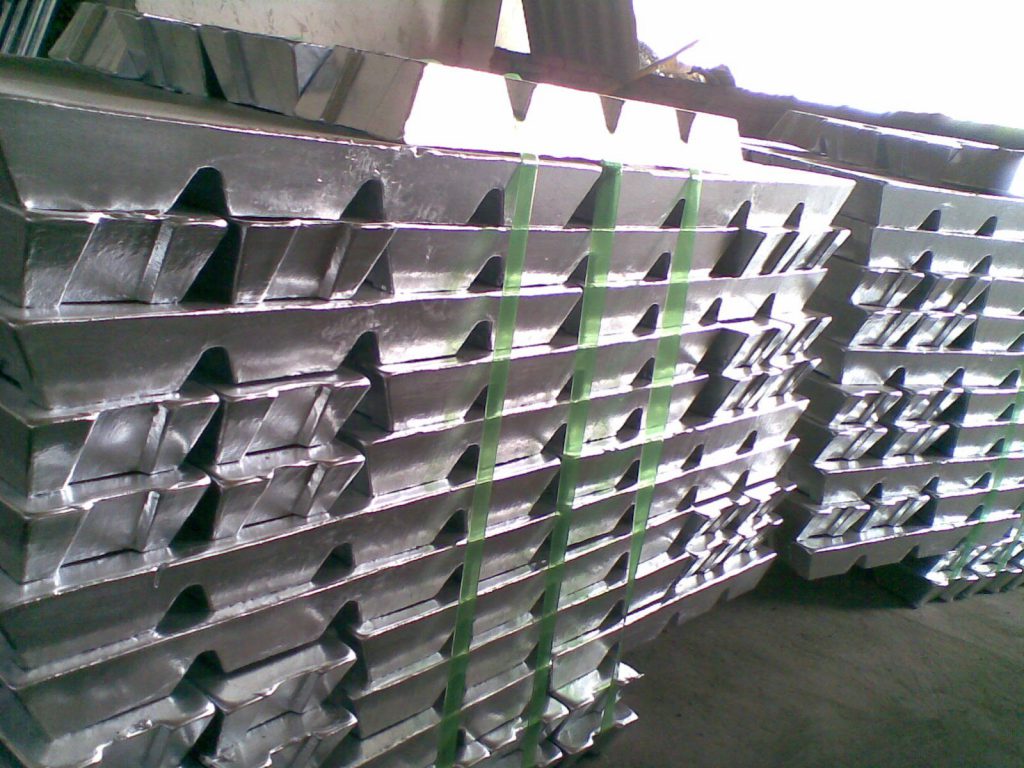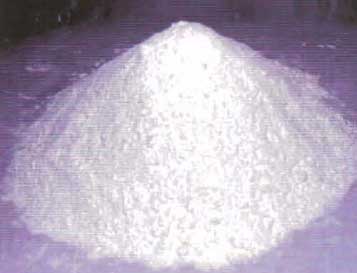Zinc
- Home
- / Zinc
Zinc Ingots

Zinc is a metallic chemical element. It has a white color with a bluish tinge. It has a high resistance to atmospheric corrosion and a major use is as a protective coating for iron and steel sheet and wire. Galvanized sheets are a prime example. The melting point of zinc is 419 deg C.
Zinc is a sacrificial material that will give itself up before the steel trap will start to rust. This method is also employed on ship hulls as well as other steel objects in contact with highly corrosive environments. Galvanized conduit and tubing is galvanized to deter rust from small scratches. The galvanized coating will sacrifice itself. Zinc Ingot is refined metallic Zinc in an ingot form.
| Particular | Test Specification |
|---|---|
| Zinc (Zn) | 99.96% min |
| Lead (Pb) | 0.23% max |
| Cadmium (Cd) | 0.0016% max |
| Copper (Cu) | 0.0009 max |
| Iron (Fe) | 0.0025% max |
Zinc Alloys
| Particular | Test Specification |
|---|---|
| Zinc (Zn) | 89.8 – 90.2% |
| Aluminium Content | 9.8 – 10.2% |
| Iron Content | 0.030 max |
A widely used alloy which contains zinc is brass, in which copper is alloyed with anywhere from 3% to 45% zinc, depending upon the type of brass. Brass is generally more ductile and stronger than copper and has superior corrosion resistance. These properties make it useful in communication equipment, hardware, musical instruments, and water valves.
Other widely used alloys that contain zinc include nickel silver, typewriter metal, soft and aluminum solder, and commercial bronze. Zinc is also used in contemporary pipe organs as a substitute for the traditional lead/tin alloy in pipes.

Zinc Acetate

Zinc acetate is the chemical compound with the formula Zn(O2CCH3)2, which commonly occurs as a dihydrate Zn(O2CCH3)2(H2O)2. Both the hydrate and the anhydrous forms are colorless solids that are commonly used in chemical synthesis and as dietary supplements. Zinc acetates are prepared by the action of acetic acid on zinc carbonate or zinc metal.
Zinc acetate is used as a dietary supplement and in lozenges used to treat the common cold. Zinc acetate alone is thought to be a more effective treatment than zinc gluconate. Zinc acetate can also be used to treat zinc deficiencies. As an oral daily supplement it is used to inhibit the body’s absorption of copper as part of the treatment for Wilson’s disease.
| Particular | Test Specification |
|---|---|
| Antimony Pentoxide | 64.00% min |
| Sodium Oxide | 12.00% max |
| Lead Oxide | 0.20% max |
| Iron Oxide | 0.10 max |
| Copper Oxide | 0.01% max |
| Chromium Oxide | 0.02% max |
| Metal Oxide | 0.01% max |
| Moisture | 0.30% max |
- 9829035894
- admin@mittalpigments.com
- A-203, Rd Number 5, Indraprastha Industrial Area, Kota, Rajasthan 324005
Useful Links
Products
© 2014 Mittal Pigments Pvt. Ltd. All rights reserved.
